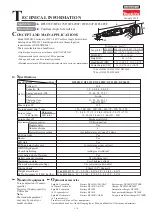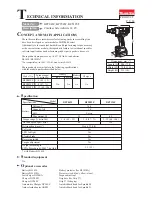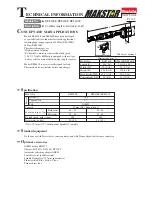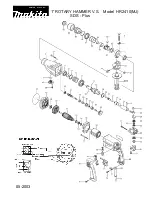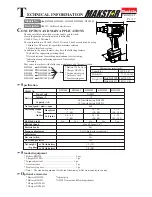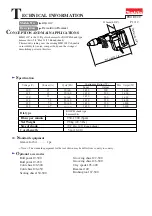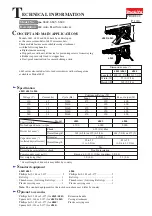AN10907
All information provided in this document is subject to legal disclaimers.
© NXP B.V. 2010. All rights reserved.
Application note
Rev. 1 — 28 December 2010
34 of 82
NXP Semiconductors
AN10907
TEA1613T resonant power supply control IC
8.4 HBC oscillator
The slope controlled oscillator determines the switching frequency of the half-bridge. The
oscillator generates a triangular waveform at the external capacitor C
fmin
.
8.4.1 Presets
Two external components determine the frequency range:
•
Capacitor at CFMIN: This sets the minimum frequency in combination with an
internally trimmed current source.
•
Resistor at RFMAX: This sets the frequency range and, in combination with C
fmin
, the
maximum frequency.
The oscillator frequency depends on the charge and discharge current of the capacitor on
CFMIN. This (dis)charge current consists of a fixed part which determines the minimum
frequency, and a variable part which depends on the value of the resistor on RFMAX and
the voltage at pin RFMAX.
•
The voltage on RFMAX is 0 V when the oscillator frequency is minimum.
•
The voltage on RFMAX is 2.5 V when the oscillator frequency is maximum.
•
The value of the resistor on RFMAX determines the relationship between V
RFMAX
and
the frequency. It also determines the maximum frequency when V
RFMAX
= 2.5 V.
The maximum frequency of the oscillator is independent of the settings on CFMIN and
RFMAX and is limited internally to a minimum of 500 kHz.
visualizes the
relationship between V
RFMAX
, R
FMAX
, C
fmin
and f
HB
.
8.4.2 Operational control
During operation, the oscillator is controlled by the state of the half-bridge node HB. To
achieve this, an internal slope detection circuit monitors the voltage on HB.
The charge current of the oscillator is initially set to a low value of 30
A. After the start of
the half-bridge slope has been detected, the charge current is increased to the normal
value that corresponds to the working frequency at that moment. The working frequency
is controlled by feedback on SNSFB. Normally, the half-bridge slope starts directly after
the switch-off of the MOSFET, the time with the low oscillator current (30
A) being
negligible.
Fig 21. Frequency relationships
f
HB,limit
f
max,B
V
fmax
V
RFMAX
A
Curve C
fmin
R
fmax
A
high
high
B
low
low
C
low
too low
B
C
f
max,A
f
min,
B and C
f
min,A
0
f
HB
001aal445

